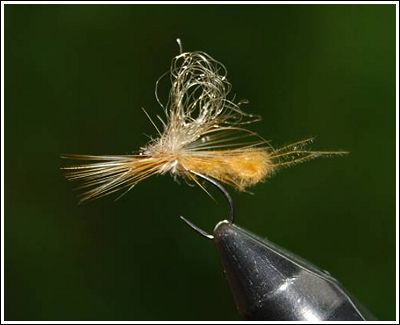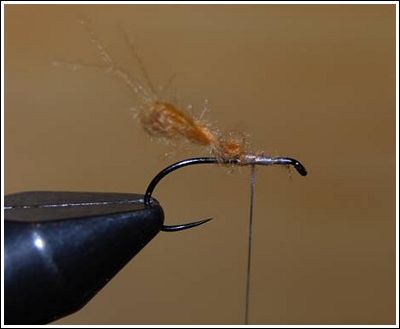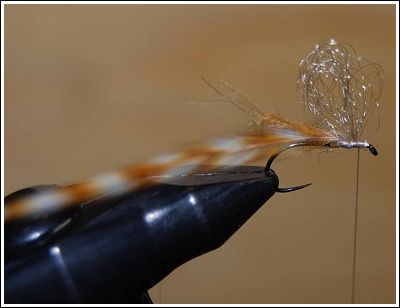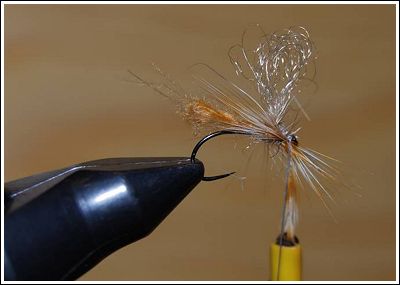|

Angle flies
by Geir Kjensmo
Well, the name should have been "the
natural Angle flies". The aim with these flies is to position and make
them float in a natural right angle to the surface. It's important that
your fly ride natural right on the surface when presented; a lot of
flies tilt over in many situations, giving undesirable imprint on the
surface.
I have used these flies for nearly two
seasons now and must confess that they have never failed me when
imitating mayflies for selective trout and grayling. I do most of my dry
fly fishing in the rivers Glomma and Rena. Especially in the latter, big
trout here can be very difficult and selective.
I tie the flies in different colures
and sizes of course, but find that the success has more to do with the
fact that these flies land in a perfect natural upright position almost
every time. They also make a natural imprint on the surface, just like
the real mayflies.
Imitations of the Aurivilli and Ignita,
have given me superb dry fly fishing on frequent occasions lately;
occasions when other fly fishermen tear their hair in frustration.
Materials needed are few: one cdc
feather, one good hackle and some synthetic fibres for wing (antron-yarn
etc.)

My solution is to leave most of the
hook shank bare and use this to make "a gravity point" to land the fly
in an upright position on the surface. I use one cdc feather and hold it
between forefinger an thumb on each hand; then twitch the feather and
double it to make back body of the fly. Also raise this section in an
angle up-ward using the tying silk.

Tie in the hackle

Tie in the loop wing; pull some of the
fibres, after making the loop, to “fill” the loop by making some
narrower loops.

Use fibres from what’s
left of the cdc, rip the fibres off the feather, and make a “ball”
around the base of the wing with this dubbing.

I also use my method for hackling the
flies; a variation of parachute hackle, but were the hackle is winded in
an angle to the hook shank. Wind the hackle cross; behind the wing at
the base of the "ball" and down underneath the hook, in front of the
tying tread, and cross up again 2 turns. Tighten the tying silk when
winding the hackle like this. Finish off and put on a drop of good head
cement. Simple!
Stone
fly

I also use my tying method
for stone flies and midges, but then I use wings of deer hair. Back body
and hackle are tied according to the method mentioned earlier in the
article.
Caddis
fly

My favourite caddis fly is
a variation of famous fly "Streaking Caddis", but on my fly I do not use
dubbing. This fly do not have a back body, deer hair is tied in like on
a "Streaking Caddis". Then the hair is trimmed to make the wing stand in
an angle to the hook shaft. Here the hook helps the fly to land correct
on the water. Important for the succes of this fly is to impregnate the
fly well with floatant aid.
Text and photos by
Geir Kjensmo © 2009
www.mastery.no
|